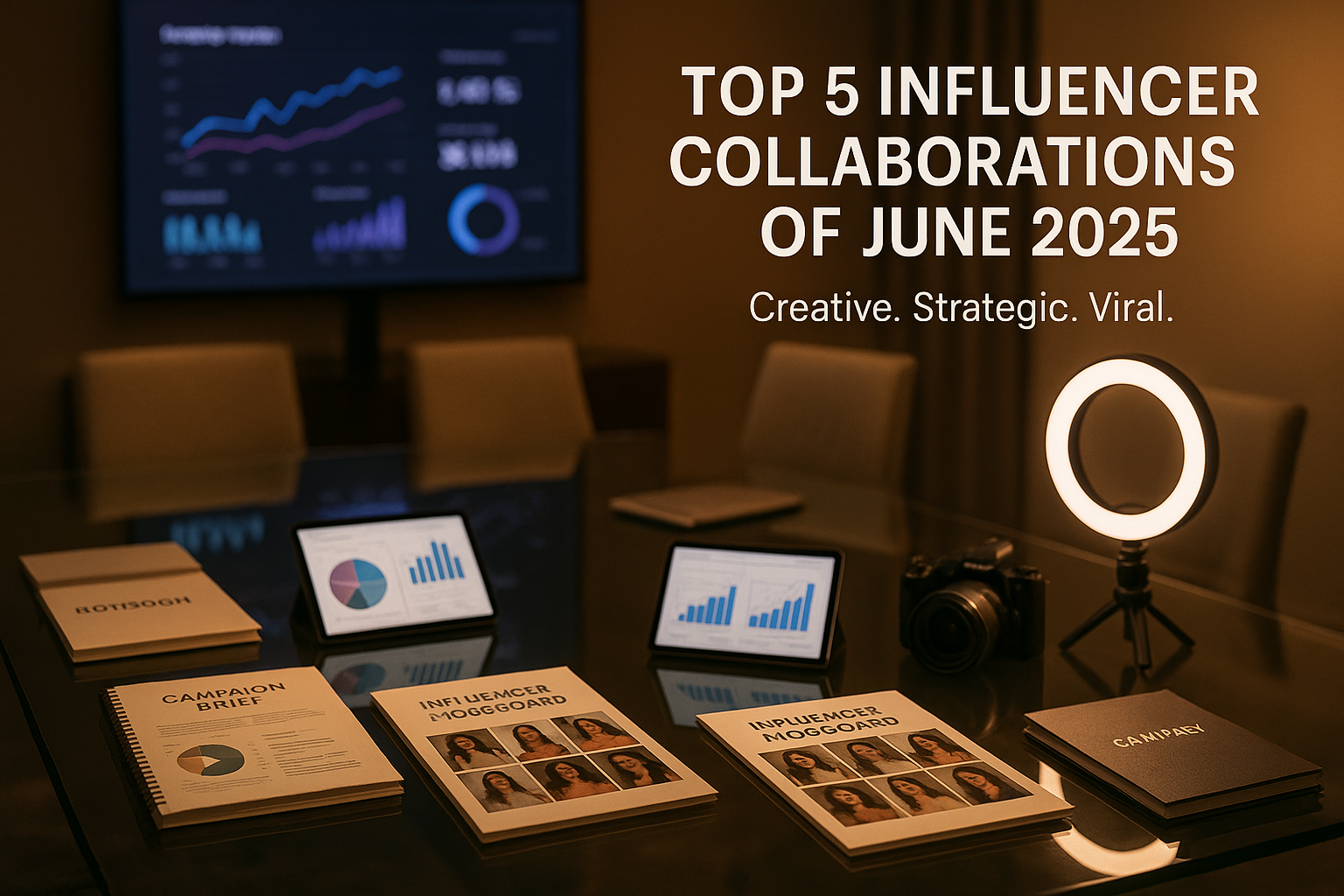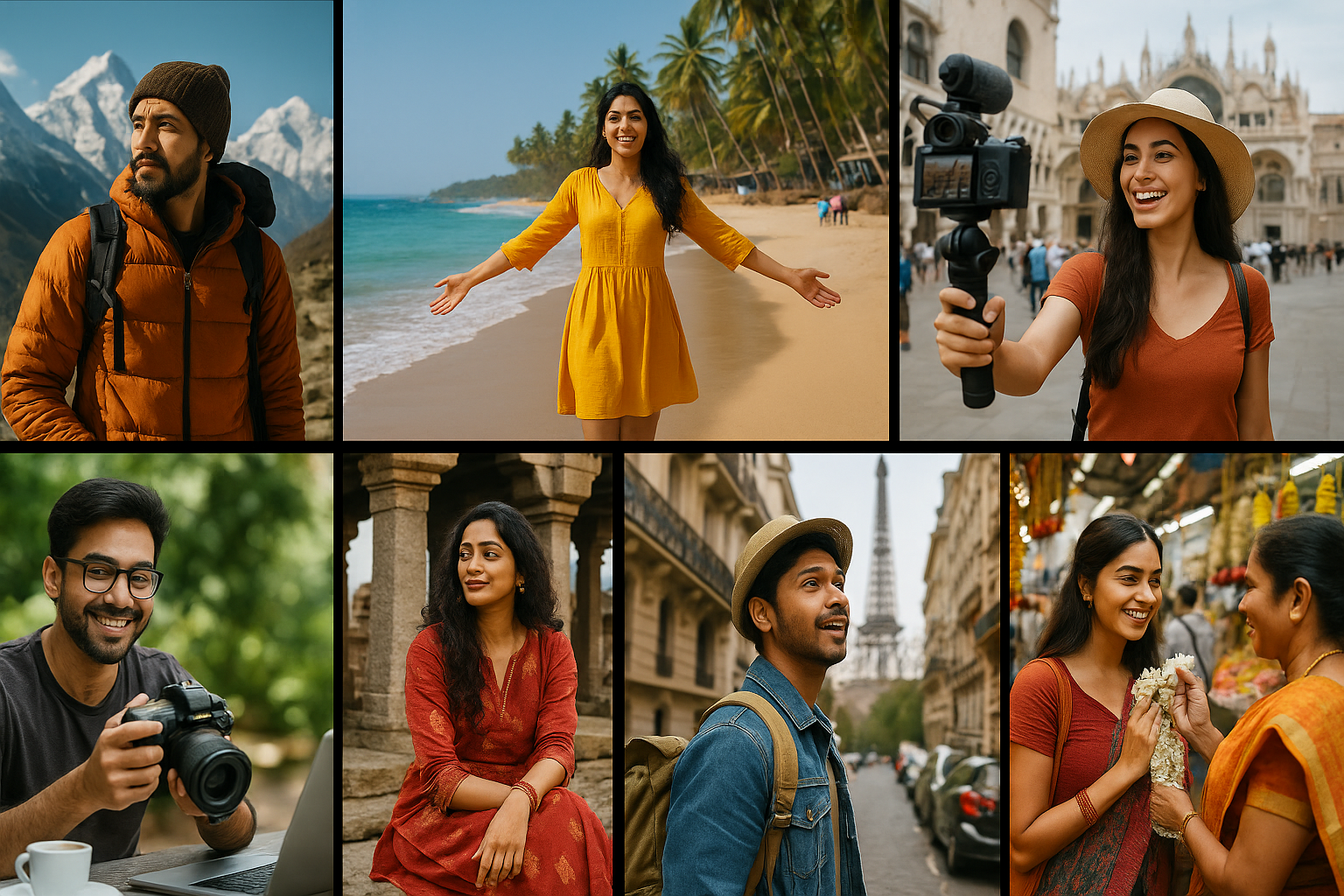Influencer marketing isn’t just about fancy posts June proved it’s also a round of strategic, creative, and highly engaging brand partnerships. From viral dance challenges to hyper-local affinity campaigns, here are the top 5 influencer collaborations of June that marketers need to study – and the key takeaways they offer.
1. Moncler’s #MonclerBubbleUp TikTok Challenge
Campaign Overview: Luxury outerwear giant Moncler sparked worldwide buzz with its #MonclerBubbleUp TikTok challenge. The premise? Wrap yourself in puffy layers to the viral hit “Bubble 24 Hours” – then reveal the authentic Moncler bubble coat.
Why It Worked: By tapping TikTok stars like Charli D’Amelio and Bella Poarch, Moncler broke through luxury fashion’s elite bubble. The campaign generated a mind-blowing 7.6 billion views, turning a static product into a fun, replayable moment .
Takeaway: Design campaigns that are shareable and simple to recreate. When influencers feel genuinely excited, followers do too – turning luxury into pop culture.
2. Audible’s #AudibleAnywhere – Bringing Stories to Life
Campaign Overview: Audible collaborated with dozens of micro and nano creators to showcase how their audiobooks blend seamlessly into daily life-morning commutes, cooking sessions, or evening downtime.
Why It Worked: Authentic, personal narratives – like “I listened to Audible while walking my cat” – offered followers a peek into how audiobooks can fit into small, meaningful moments .
Takeaway: Micro-influencers from niche communities can create relatable, high-ROI content. Personal stories trump polished ads every time.
3. Zilla’s Targeted TikTok Reptile Campaign
Campaign Overview: Pet care brand Zilla teamed up with niche TikTok creators – veterans of the reptile hobby – to generate over 9.2 million views and 58,000 paid clicks through comprehensive campaign waves .
Why It Worked: The content wasn’t a generic ad, but an immersive journey into habitat care, product demos, and breeder interviews – authentic content resonated deeply with passionate pet parents.
Takeaway: Micro-influencers tied closely to your niche can deliver highly targeted engagement and sales. Authenticity wins in passion-driven categories.
4. Paytm UPI Lite Campaign – Connecting Everyday India
Campaign Overview: Paytm rolled out a multi-platform campaign to promote UPI Lite, featuring comedic skits, lifestyle snippets, and authentic user moments across Instagram, YouTube, LinkedIn, and X .
Why It Worked: By engaging macro, micro, and nano influencers – each tailoring content to their audience-Paytm generated 3.6 million views, 1.6 million engagements, and over 250 unique posts.
Takeaway: Versatile platform strategy with tailored messaging boosts reach and relevance. Diverse influencers drive wider adoption and stronger awareness.
5. Domino’s Gujarat BOGO Offer – Localized and Loud
Campaign Overview: For their Gujarat BOGO (Buy One Get One) pizza offer, Domino’s partnered with vernacular content creators across TikTok and Instagram, creating short, quirky skits in regional languages .
Why It Worked: With 32 local influencers sharing bite-sized, culturally relevant content, Domino’s saw 1.36 million viewers and 1.46 million impressions – campaign success grounded in ground-level familiarity.
Takeaway: Don’t underestimate the power of regional influencers. Local language + local flavor = instant resonance and high conversion.
Common Threads Behind June’s Campaign Hits
- Native Creativity: Each campaign used platforms, formats, and influencer style to fit the medium – not force generic ads.
- Authenticity First: Micro-influencers, with their personal storytelling, beat macro sponsorship – every single time.
- Niche Focus: Zilla serves reptile owners, Audible speaks to multitaskers, Domino’s touches local cultures—their targeting wasn’t random.
- Diverse Platforms: Combining TikTok, Instagram, YouTube, X, even LinkedIn widened reach without diluting messaging.
- Measurable ROI: Brands employed trackable links, coupon codes, UGC- ensuring campaigns were data, not just noise.
What Marketers Must Remember
- Design for replication. Challenge-based campaigns that invite participation (like #BubbleUp) unlock virality.
- Leverage niche trust. Smaller audiences often engage more deeply – choose micro-influencers wisely.
- Tailor per platform. What works on TikTok won’t land on LinkedIn – match content to channel.
- Blend formats. Use unboxing videos, audiograms, skits, and meme-driven formats to appeal across demographics.
- Track outcomes. Views are nice, but conversions and sentiment are gold. Use UTM, tracking links, and engagement dashboards.
Final Word
June’s campaign showcase proves influencer marketing isn’t a one-size-fits-all game. Brands that win are those who craft platform-native experiences, collaborate with genuine creators, and execute region- or niche-specific strategies.
If your brand wants to break through the clutter in 2025, use June’s playbook: creative + credible + custom.
FAQs
Q1. Why are micro-influencers important?
They deliver higher engagement and trust ideal for niche or demo-specific campaigns across India.
Q2. Can luxury brands go viral like Moncler?
Yes if campaigns are fun, shareable, and have clear participation hooks like #MonclerBubbleUp.
Q3. Do campaigns need to be on multiple platforms?
Yes different audiences engage differently. Tailor content rather than recycle.
Q4. What’s better: reach or deep engagement?
Deep engagement later wins brand loyalty. Measure both reach and conversion metrics.
Q5. How do you track influencer ROI?
Track with unique URLs, coupon codes, engagement dashboards, and platform analytics.







